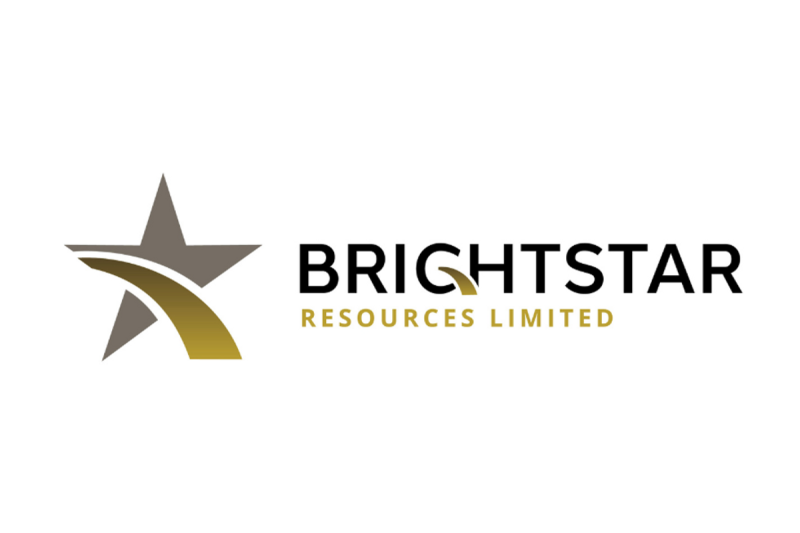
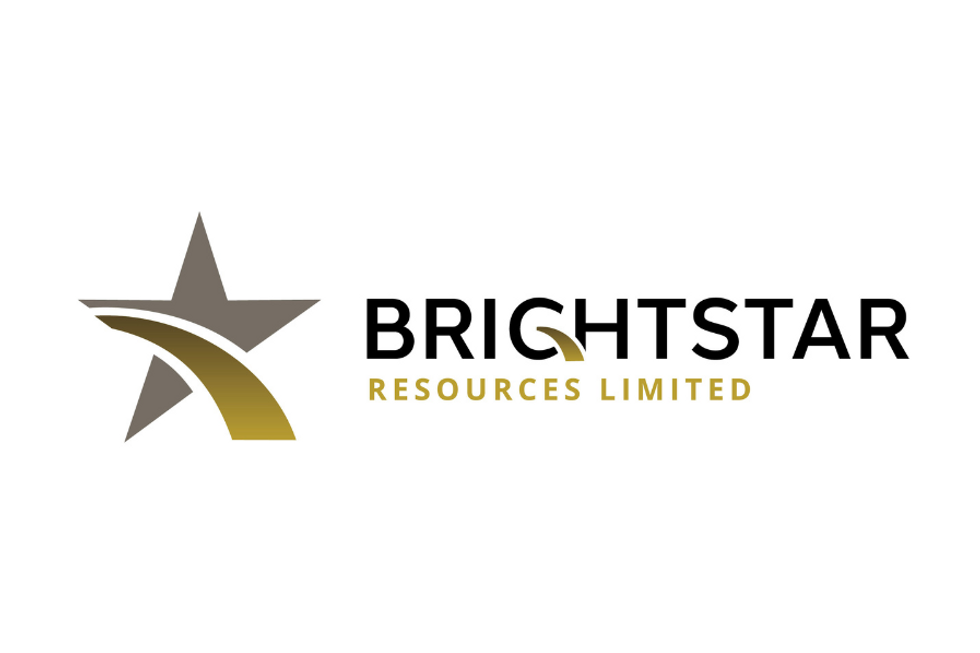 Brightstar Resources (BTR:AU) has announced Sandstone exploration drilling returns 157m @ 1.13g/t Au
Brightstar Resources (BTR:AU) has announced Sandstone exploration drilling returns 157m @ 1.13g/t Au
Download the PDF here.

 Brightstar Resources (BTR:AU) has announced Sandstone exploration drilling returns 157m @ 1.13g/t Au
Brightstar Resources (BTR:AU) has announced Sandstone exploration drilling returns 157m @ 1.13g/t Au
Download the PDF here.

 Brightstar Resources (BTR:AU) has announced Sandstone exploration drilling returns 157m @ 1.13g/t Au
Brightstar Resources (BTR:AU) has announced Sandstone exploration drilling returns 157m @ 1.13g/t Au
Download the PDF here.
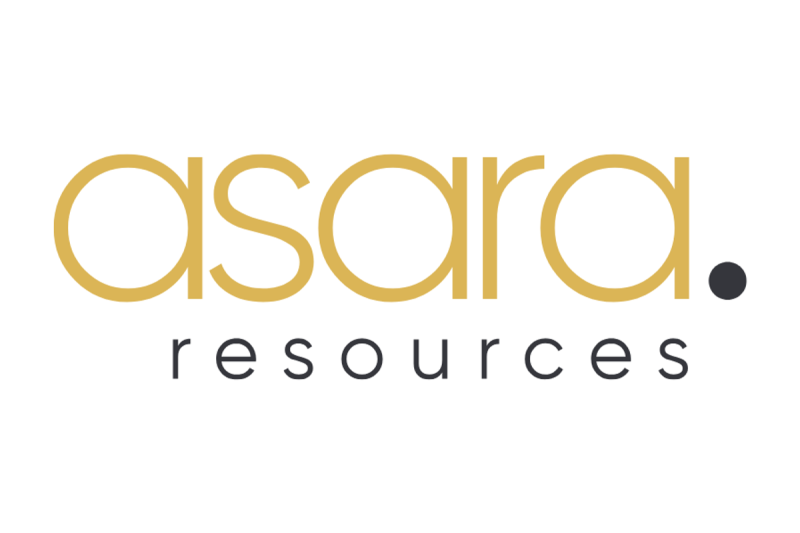
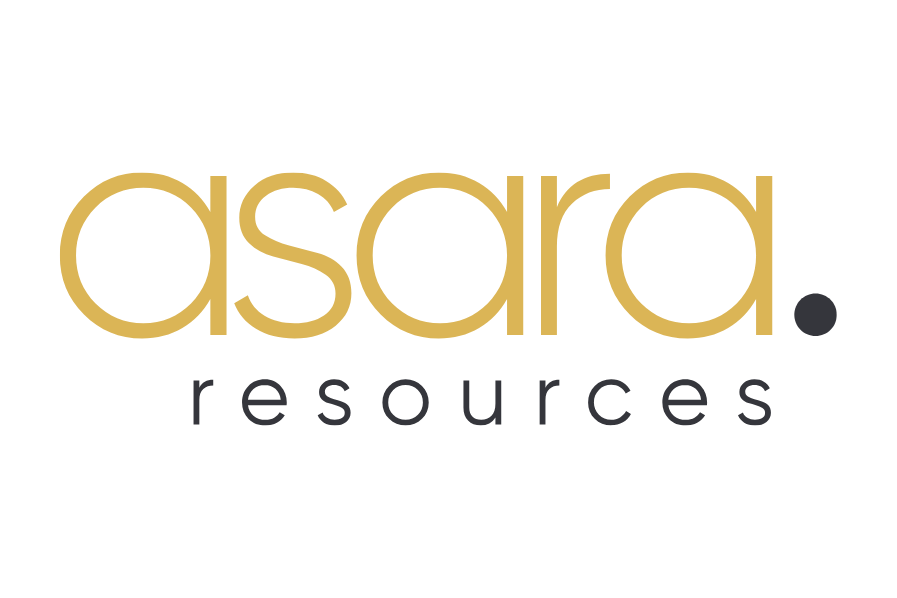 Asara Resources (AS1:AU) has announced Asara Expands Kada Gold Project
Asara Resources (AS1:AU) has announced Asara Expands Kada Gold Project
Download the PDF here.
President Donald Trump rolled out a $12 billion farm aid package to support farmers, according to the White House.
The aid package will provide up to $11 billion toward the U.S. Department of Agriculture’s (USDA) new Farmer Bridge Assistance Program, which is designed to provide single payments to row crop farmers, while the remaining $1 billion will go to farmers whose crops do not qualify for the program.
Further details will be hashed out as the USDA continues to evaluate market conditions, according to the White House.
The president unveiled the new aid package at a Monday roundtable at the White House. Those who appeared at the event included Treasury Secretary Scott Bessent, Secretary of Agriculture Brooke Rollins, as well as corn, soybean, rice and other types of farmers.
The announcement comes as the U.S. and China have gone head-to-head on trade negotiations in 2025, and after China reined in its soybean purchases from the U.S. amid ongoing tariff negotiations between Beijing and Washington, D.C.
However, Trump and Chinese President Xi Jinping met in South Korea in October, where the two hashed out a series of agreements concerning trade. Specifically, Trump said he agreed to cut tariffs on Chinese imports by 10% — reducing the rate from 57% to 47% — because China said it would cooperate with the U.S. on addressing the U.S. fentanyl crisis.
Since those talks, China has started to boost its purchases of soybeans again. China purchased at least 840,000 metric tons of soybeans for delivery in December and January, Reuters reported in November. That purchase marked the largest shipment since at least January, Reuters reported.
Meanwhile, Bessent said that China so far is upholding its end of the bargain on the trade deal, including provisions to buy 12 million tons of soybeans by the end of February 2026.
‘China is on track to keep every part of the deal,’ Bessent said at The New York Times Dealbook Summit Wednesday.
Trump also voiced optimism about China’s soybean purchases, and signaled Beijing may purchase more than the original 12 million tons by February 2026.
‘I spoke with President Xi recently, very recently,’ Trump said Monday. ‘And I think he’s going to do even more than he promised to do. So I think the relationship is a very good one. I think he’s going to do more than he promised to do. And what he promised to do is a lot. So we’re very happy with that.’
China is the primary foreign purchaser of U.S. soybeans, and bought approximately half of U.S. soybean exports in 2024, totaling approximately $12.6 billion out of $25.8 billion in total U.S. exports, according to the U.S. Census Bureau and USDA. China also imported nearly 27 metric tons of soybeans that year.
Trump is helping the agriculture industry by ‘negotiating new trade deals to open new export markets for our farmers and boosting the farm safety net for the first time in a decade,’ White House spokeswoman Anna Kelly said in a Monday statement to Fox News Digital.
Trump has previously issued an aid package to farmers. When Trump’s first administration rolled out tariffs, China issued their own retaliatory tariffs that cost the federal government billions of dollars in government aid to farmers.
Bloomberg News first reported the aid package Sunday.
Fox News’ Olivianna Calmes contributed to this report.
A Senate Republican duo unveiled their vision for expiring Obamacare premium subsidies as the Senate hurtles toward a vote on the credits at the end of this week.
Sens. Susan Collins, R-Maine, and Bernie Moreno, R-Ohio, announced their plan to tackle the subsidies, which are set to expire at the end of this year. Their proposal, made public on Monday, would extend the subsidies for two years.
The upper chamber is set to vote on legislation dealing with the expiring subsidies on Thursday, but so far only Senate Democrats have united behind a proposal from Senate Minority Leader Chuck Schumer, D-N.Y., that would extend the credits for three years.
Schumer’s plan is likely dead on arrival, given that it lacks any of the reforms to the subsidies demanded by the GOP. And Republicans are mulling several options, but have so far not picked legislation to form up behind and put on the floor in a possible side-by-side vote.
Moreno and Collins hope that their legislation, which would also put an income cap onto the subsidies for households making up to $200,000 and eliminate zero-cost premiums as a fraud preventive measure by requiring a $25 minimum monthly payment, gets a shot.
Moreno argued that former President Barack Obama and the Democratic Party ‘created this disaster, lining the pockets of massive insurance companies while healthcare costs for everyday Americans skyrocketed.’
‘But I refuse to let the American people pay the price for the Democrats’ incompetence,’ he said in a statement. ‘I am willing to work with anyone to finally bring down costs for all Americans and hope my colleagues across the aisle will commit to doing the same.’
Collins said that lawmakers needed to ‘pursue practical solutions that increase affordability without creating sudden disruptions in coverage,’ with the expiration deadline looming. Republicans are divided on whether they want to actually extend the subsidies or allow them to sunset and be dealt with early next year.
‘This bill would help prevent unaffordable increases in health insurance premium costs for many families by extending the [Obamacare] enhanced premium tax credits for two years and putting a reasonable income cap on these subsidies to ensure they are going to the individuals who need them,’ Collins said in a statement.
Their proposal joins the ranks of public ideas and legislation floated by Republicans, but strays from the desire many in the GOP have to convert the money that flows into the subsidies directly to Americans through Health Savings Accounts (HSAs).
President Donald Trump has publicly backed converting the premiums to HSAs, but even with his support, Republicans have not nailed down a legislative move that could make it to the floor.
It’s also unclear if Republicans will line up behind their plan, given that it extends the subsidies without additional action on taxpayer funding flowing to abortion — a key sticking point in bipartisan negotiations on the credits — and lacks the inclusion of HSAs.


NorthStar Gaming Holdings Inc. (TSXV: BET,OTC:NSBBF) (OTCQB: NSBBF) (‘NorthStar’ or the ‘Company’) announces that, effective immediately, Michael Moskowitz is no longer the Company’s Chief Executive Officer (‘CEO’) or Chair of its Board of Directors (the ‘Board’).
CEO Transition
The Board has appointed Corey Goodman, the Company’s Chief Development Officer and General Counsel, as Interim Chief Executive Officer. Mr. Goodman, who co-founded NorthStar, has extensive experience in online gaming, operational realignment, corporate restructuring, and capital markets. Working closely with the Board, he will guide the Company’s work to refine its cost structure, enhance operational discipline, and to drive improvement efforts in respect of both revenue and profitability.
‘Mr. Goodman has been an essential contributor since the founding of the Company,’ said Dean MacDonald, Director. ‘The Board has full confidence in his leadership and his deep knowledge of our business. His balanced and disciplined approach will help ensure continuity while we focus on strengthening performance and positioning NorthStar for long-term growth.’
NorthStar will continue to update stakeholders as it advances its operational and financial priorities.
Board Update
In connection with Mr. Moskowitz’s departure from the Company as Chief Executive Officer and Chair, Dean MacDonald, who has served on the Board of Directors since 2023, has been appointed Chair of the Board.
Barry Shafran has resigned from the Board of Directors, effective immediately. Mr. Shafran served as Chair of the Audit Committee and the Board thanks him for his service and contributions. An announcement regarding the appointment of an additional independent director and a new Chair of the Audit Committee will be made once the Board has finalized its selection.
About NorthStar
NorthStar proudly owns and operates NorthStar Bets, a Canadian-born casino and sportsbook platform that delivers a premium, distinctly local gaming experience. Designed with high-stakes players in mind, NorthStar Bets Casino offers a curated selection of the most popular games, ensuring an elevated user experience. Our sportsbook stands out with its exclusive Sports Insights feature, seamlessly integrating betting guidance, stats, and scores, all tailored to meet the expectations of a premium audience.
As a Canadian company, NorthStar is uniquely positioned to cater to customers who seek a high-quality product and an exceptional level of personalized service, setting a new standard in the industry. NorthStar is committed to operating at the highest level of responsible gaming standards.
NorthStar is listed in Canada on the TSX Venture Exchange (‘TSXV’) under the symbol ‘BET’ and in the United States on the OTCQB under the symbol ‘NSBBF’. For more information on the Company, please visit: www.northstargaming.ca.
No stock exchange, securities commission or other regulatory authority has approved or disapproved the information contained herein. Neither the TSXV nor its Regulation Services Provider (as that term is defined in the policies of the TSXV) accepts responsibility for the adequacy or accuracy of this press release.
Cautionary Note Regarding Forward-Looking Information and Statements
This communication contains ‘forward-looking information’ within the meaning of applicable securities laws in Canada (‘forward-looking statements’), including without limitation, statements with respect to the following: expected performance of the Company’s business, including but not limited to, its cost structure, operational discipline and initiatives, and revenue and profitability. The foregoing is provided for the purpose of presenting information about management’s current expectations and plans relating to the future and allowing investors and others to get a better understanding of the Company’s anticipated financial position, results of operations, and operating environment. Often, but not always, forward-looking statements can be identified by the use of words such as ‘plans’, ‘expects’, ‘is expected’, ‘budget’, ‘scheduled’, ‘estimates’, ‘continues’, ‘forecasts’, ‘projects’, ‘predicts’, ‘intends’, ‘anticipates’ or ‘believes’, or variations of, or the negatives of, such words and phrases, or state that certain actions, events or results ‘may’, ‘could’, ‘would’, ‘should’, ‘might’ or ‘will’ be taken, occur or be achieved. This information involves known and unknown risks, uncertainties and other factors that may cause actual results or events to differ materially from those anticipated in such forward-looking statements. This forward-looking information is based on management’s opinions, estimates and assumptions that, while considered by NorthStar to be appropriate and reasonable as of the date of this press release, are subject to known and unknown risks, uncertainties, assumptions and other factors that may cause the actual results, levels of activity, performance, or achievements to be materially different from those expressed or implied by such forward- looking information. Such factors include, among others, the following: risks related to the Company’s business and financial position; risks associated with general economic conditions; adverse industry risks; future legislative and regulatory developments; the ability of the Company to implement its business strategies; and those factors discussed in greater detail under the ‘Risk Factors’ section of the Company’s most recent annual information form, which is available under NorthStar’s profile on SEDAR+ at www.sedarplus.ca. Many of these risks are beyond the Company’s control.
If any of these risks or uncertainties materialize, or if the opinions, estimates or assumptions underlying the forward-looking information prove incorrect, actual results or future events might vary materially from those anticipated in the forward-looking statements. Although the Company has attempted to identify important risk factors that could cause actual results to differ materially from those contained in the forward-looking statements, there may be other risk factors not presently known to the Company or that the Company presently believes are not material that could also cause actual results or future events to differ materially from those expressed in such forward-looking statements. There can be no assurance that such information will prove to be accurate, as actual results and future events could differ materially from those anticipated in such information. No forward-looking statement is a guarantee of future results. Accordingly, you should not place undue reliance on forward-looking information, which speaks only as of the date made. The forward-looking information contained in this press release represents NorthStar’s expectations as of the date specified herein, and are subject to change after such date. However, the Company disclaims any intention or obligation or undertaking to update or revise any forward-looking information whether as a result of new information, future events or otherwise, except as required under applicable securities laws.
All of the forward-looking information contained in this press release is expressly qualified by the foregoing cautionary statements.
For further information:
Company Contact:
Corey Goodman
Interim Chief Executive Officer 647-530-2387
investorrelations@northstargaming.ca

To view the source version of this press release, please visit https://www.newsfilecorp.com/release/277295

News Provided by Newsfile via QuoteMedia
President Donald Trump is poised to roll out a $12 billion farm aid package to support farmers, according to the White House.
The aid package will provide up to $11 billion toward the U.S. Department of Agriculture’s (USDA) new Farmer Bridge Assistance Program, which is designed to provide single payments to row crop farmers, while the remaining $1 billion will go to farmers whose crops do not qualify for the program.
Further details will be hashed out as the USDA continues to evaluate market conditions, according to the White House.
The president is expected to unveil the new aid package at a Monday roundtable at the White House. Those expected to appear at the event include Treasury Secretary Scott Bessent, Secretary of Agriculture Brooke Rollins, as well as corn, soybean, rice and other types of farmers.
The announcement comes as the U.S. and China have gone head-to-head on trade negotiations in 2025, and after China reined in its soybean purchases from the U.S. amid ongoing tariff negotiations between Beijing and Washington, D.C.
However, Trump and Chinese President Xi Jinping met in South Korea in October, where the two hashed out a series of agreements concerning trade. Specifically, Trump said he agreed to cut tariffs on Chinese imports by 10% — reducing the rate from 57% to 47% — because China said it would cooperate with the U.S. on addressing the U.S. fentanyl crisis.
Since those talks, China has started to boost its purchases of soybeans again. China purchased at least 840,000 metric tons of soybeans for delivery in December and January, Reuters reported in November. That purchase marked the largest shipment since at least January, Reuters reported.
Meanwhile, Bessent said that China so far is upholding its end of the bargain on the trade deal, including provisions to buy 12 million tons of soybeans by the end of February 2026.
‘China is on track to keep every part of the deal,’ Bessent said at The New York Times Dealbook Summit Wednesday.
China is the primary foreign purchaser of U.S. soybeans, and bought approximately half of U.S. soybean exports in 2024, totaling approximately $12.6 billion out of $25.8 billion in total U.S. exports, according to the U.S. Census Bureau and USDA. China also imported nearly 27 metric tons of soybeans that year.
Trump is helping the agriculture industry by ‘negotiating new trade deals to open new export markets for our farmers and boosting the farm safety net for the first time in a decade,’ White House spokeswoman Anna Kelly said in a Monday statement to Fox News Digital.
Trump has previously issued an aid package to farmers. When Trump’s first administration rolled out tariffs, China issued their own retaliatory tariffs that cost the federal government billions of dollars in government aid to farmers.
Bloomberg News first reported the aid package Sunday.
Fox News’ Olivianna Calmes contributed to this report.
A co-founder of the House of Representatives’ DOGE Caucus is declaring that the movement for government efficiency is still alive and well, even if the surrounding furor has died down.
‘DOGE is alive. It certainly is not on the front burner as it needs to be. There’s still a lot of members of Congress that want to continue the battle [against] waste, fraud and abuse,’ Rep. Aaron Bean, R-Fla., co-chair of the House DOGE Caucus, told Fox News Digital.
‘We’re still $38 trillion in debt, that’s growing. So anything we can possibly do — we’re still looking to continue the DOGE efforts.’
Bean said he was hoping to soon hold more caucus meetings ‘just to let everybody know DOGE is not dead.’
The concept of ‘DOGE’ took Washington — Republicans in particular — by storm earlier this year, when President Donald Trump tapped billionaire Elon Musk to lead an initiative called the ‘Department of Government Efficiency.’
Musk said at the time that he was committed to finding as much as $2 trillion in savings for the federal government. That goal was not reached by the time Musk reached the end of his tenure, however.
The DOGE website, which has not been updated since early October, claims an estimated $214 billion in savings for the federal government.
But Bean and other Republicans have tried to keep it alive, celebrating that cutting bureaucratic red tape and bloated federal contracts was finally generating enthusiasm in the cultural zeitgeist.
Musk’s push spurred multiple similar efforts in Congress, including Bean’s caucus and a House Oversight subcommittee called ‘Delivering on Government Efficiency’ (DOGE).
The caucus, which is also co-chaired by Reps. Pete Sessions, R-Texas, and Blake Moore, R-Utah, had several meetings that saw Republicans and even some Democrats in attendance.
Those, too, have since wound down, but Bean told Fox News Digital that he’s looking to bring them back and could begin with a focus on unused office space owned by the U.S. government.
‘I’m not saying it’s mismanaged, I’m just saying it’s not the most efficient use of taxpayer dollars to maintain all this space where people still work from home or are working across the country,’ Bean said. ‘That’s something that I think we can coalesce around, save some money as well as get spending under control.’
He also said he hoped for more bipartisan participation going forward, telling Fox News Digital, ‘It shouldn’t be a partisan issue. Everybody should be on board.’
The Israel Defense Forces and Israel Security Agency have exposed what they describe as a secret Hamas money-exchange network operating in central Turkey ‘under Iran’s direction,’ according to documents and statements released this week.
According to the intelligence released by the IDF and ISA, exiled Gazans based in Turkey have used the country’s financial infrastructure to move large sums of money for Hamas, with transfers totaling hundreds of millions of dollars.
The agencies say the network operates in cooperation with the Iranian regime, transferring funds to Hamas and its senior officials and, according to Israel, helping the group rebuild its capabilities outside Gaza.
The newly exposed documents include records of currency transfers amounting to hundreds of thousands of dollars, which officials say represent only a small portion of the overall activity.
According to the Israeli security agencies, the network receives, stores, and transfers Iranian funds from within Turkey.
The IDF and ISA identified three Gazan operatives working in Turkey whom they say are central to the network: Tamer Hassan, described as a senior official in Hamas’s finance office in Turkey operating directly under Khalil al-Hayya, and currency exchangers Khalil Farwana and Farid Abu Dair.
Israel says Iran’s backing has remained constant and that Hamas continues to rebuild its operational capabilities beyond the borders of the Gaza Strip.
The timing of the IDF and ISA revelations comes amid an ongoing U.S. debate over Turkey’s regional role and its relationship with Hamas. Fox News has previously reported that Turkey has hosted Hamas figures for years and has sought a leading role in postwar Gaza, even as the Trump administration weighs whether to allow Turkish troops to participate in a U.S.-backed stabilization mission.
Sinan Ciddi, a Turkey expert at the Foundation for Defense of Democracies, told Fox News Digital that Ankara’s political protection of Hamas — paired with its hostility toward Israeli military actions — has created a permissive sanctuary that Israeli pressure alone cannot shut down.
Ciddi argues the presence of Turkish-based operatives shows how Hamas has diversified its financial footprint to evade sanctions and border controls. Ciddi added that for Israel, ‘this is not just a financial concern but a strategic warning signal’, arguing that Iran is embedding itself deeper into Turkey’s economic ecosystem and enabling a regional proxy to regenerate and project forces. If left unchecked, he warned, ‘the network could fuel future attacks and expand Hamas’s influence across the region, undermining Israel’s war aims and long-term security.’
In a recent interview with Fox News Digital, Gonul Tol, senior fellow at the Middle East Institute and author of ‘Erdoğan’s War: A Strongman’s Struggle at Home and in Syria,’ said Turkey’s aggressive Gaza posture is deeply tied to Erdoğan’s domestic political survival and his longstanding support for Islamist movements across the region.
‘The primary goal there is domestic politics,’ she said. ‘Erdoğan has always framed himself as the champion of the Palestinian cause, and by his most conservative constituency, he’s often pushed to take a strong stance against Israel.’
But Tol noted that Erdoğan has also been pragmatic behind the scenes, particularly in his dealings with Washington. ‘People in his circle say the Hamas leadership had been asked to leave Turkey quietly. They are doing everything not to anger the Trump administration,’ she said.
She added that Erdoğan even pushed Hamas to accept Trump’s Gaza proposal, noting that it included provisions that did not favor the organization.
Israeli officials have long argued that Turkey’s permissive environment has allowed Hamas to operate external networks, including financial arms backed by Iran, and say the newly released intelligence underscores the risks of allowing Turkey deeper involvement in Gaza’s future.
In announcing the findings, the IDF and ISA warned individuals and institutions against engaging with the exposed network or any other financial arms linked to Hamas, saying such interactions risk contributing to terrorist financing and aiding Hamas’s attempts to reconstitute its infrastructure abroad.
The Turkish Embassy did not respond to Fox News Digital’s request for comment.
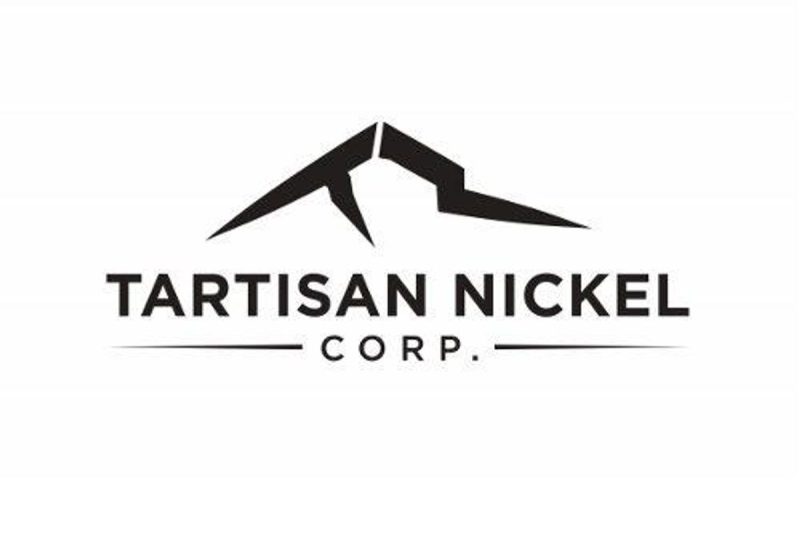

Tartisan Nickel Corp. (CSE: TN,OTC:TTSRF) (OTCQB: TTSRF) (FSE: 8TA) (‘Tartisan’ or the ‘Company’) is pleased to announce that Rodren Drilling Ltd. has formally commenced drilling at the Company’s 100% – owned Kenbridge Nickel Copper Cobalt Project, Kenora Mining District, Sioux Narrows, Northwestern, Ontario.
Rodren’s crews and equipment are now fully mobilized, and the program is underway. This drilling campaign is designed to advance several key objectives, including resource conversion, testing potential extensions of high-grade nickel-copper sulphide zones, and collecting the technical data required to support upcoming engineering and development studies.
Tartisan President & CEO, Mark Appleby, commented: ‘Rodren’s start to drilling marks an important and well-timed milestone for the Kenbridge Project. As we move into a new phase of technical work, this program is expected to enhance geological confidence, define growth potential, and further demonstrate the strength of Kenbridge as a strategic critical mineral’s asset. We look forward to updating shareholders as results come in.’
The Company will provide further updates as drilling progresses.
Qualified Person
The technical information in this news release has been prepared in accordance with Canadian regulatory requirements as set out in NI 43-101 and reviewed and approved by Dean MacEachern, P. Geo., a Qualified Person as defined by NI 43-101.
About Tartisan Nickel Corp.
Tartisan Nickel Corp. is a Canadian-based critical minerals exploration and development company which owns, the Kenbridge Nickel Project near Sioux Narrows, Northwestern Ontario, the Sill Lake Silver Property near Sault Ste. Marie, Ontario as well as the Night Danger Turtle Pond project near Dryden, Ontario.
Tartisan Nickel Corp. common shares are listed on the Canadian Securities Exchange (CSE: TN,OTC:TTSRF) (OTCQB: TTSRF) (FSE: 8TA). Currently, there are 140,674,041 shares outstanding (144,310,756 fully diluted).
For further information, please contact Mark Appleby, President & CEO, and a Director of the Company, at 416-804-0280 (info@tartisannickel.com). Additional information about Tartisan Nickel Corp. can be found at the Company’s website at www.tartisannickel.com or on SEDAR at www.sedar.com.
This news release may contain forward-looking statements including but not limited to comments regarding the timing and content of upcoming work programs, geological interpretations, receipt of property titles, potential mineral recovery processes, etc. Forward-looking statements address future events and conditions and therefore involve inherent risks and uncertainties. Actual results may differ materially from those currently anticipated in such statements.
The Canadian Securities Exchange (operated by CNSX Markets Inc.) has neither approved nor disapproved of the contents of this press release.

To view the source version of this press release, please visit https://www.newsfilecorp.com/release/277269

News Provided by Newsfile via QuoteMedia